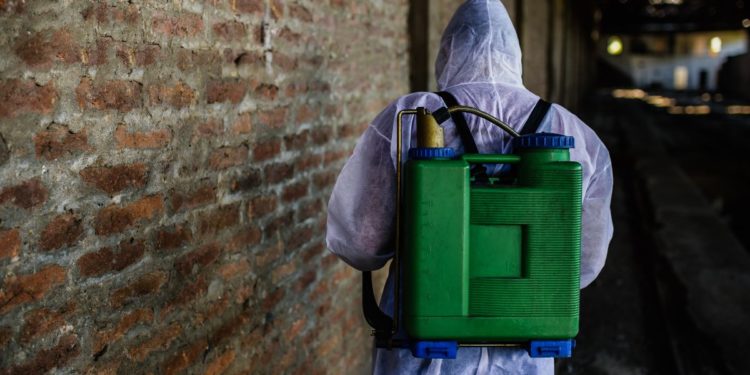Learn the primary tasks of a mice exterminator and their essential duties for effective pest control. Discover the steps involved in professional mice removal services.
If you’re dealing with a mice infestation, understanding the primary tasks of a mice exterminator can be crucial for effective pest control. These professionals are responsible for assessing the situation, identifying entry points, and implementing strategies to eliminate rodents from your space. Knowing what to expect can help you feel more empowered and informed as you tackle this common household issue.
A mice exterminator’s duties include inspecting your property for signs of mice activity, determining the extent of the infestation, and recommending appropriate treatments. They also provide guidance on preventative measures to keep your home rodent-free in the future. With their expertise in handling various extermination methods, these specialists ensure your environment returns to a safe and healthy state.
Hiring a knowledgeable exterminator streamlines the process and lets you focus on other important aspects of your home. Understanding their responsibilities can lead to a more efficient resolution of the problem and a better quality of life for you and your family.
Understanding Mice Extermination
Mice extermination involves a systematic approach for effectively identifying and eliminating mouse infestations. Key aspects include assessing the level of the problem, employing appropriate extermination techniques, and ensuring a thorough inspection after the job is completed.
Assessment of Infestation
The first step in the mice extermination process involves evaluating the extent of the infestation. You can start by looking for signs such as droppings, nests, and chew marks.
Identifying entry points is crucial. Mice can enter through tiny openings, so a careful inspection of walls, foundations, and ceilings is necessary.
A professional exterminator will often use traps or monitoring devices to gauge the severity of the problem. This assessment helps determine the most effective extermination strategies tailored to your situation.
Extermination Techniques
Once the assessment is complete, various extermination techniques are used. Common methods include traps, baits, and chemical solutions.
Traps are generally favored for their effectiveness and low environmental impact. Snap traps deliver a quick kill. Live traps allow for relocation; however, they require compliance with local wildlife laws.
Baits may consist of poison or non-toxic substances designed to lure mice. They must be placed strategically, away from pets and children.
Chemical solutions, such as rodenticides, are sometimes employed but must be used cautiously due to potential health risks. A certified exterminator tailors the approach based on your specific needs.
Post-Extermination Inspection
Once the extermination techniques are applied, a thorough post-extermination inspection is necessary. This step ensures that the methods used were effective and that no further activity occurs.
Look for any remaining signs of mice, such as new droppings or unusual noises. It’s also important to evaluate whether entry points have been sealed properly.
A professional may recommend preventative measures, such as maintaining cleanliness and sealing food containers, to avoid future infestations. These actions contribute to long-term management and help maintain a mouse-free environment.
Professional Exterminator Duties
Understanding the primary responsibilities of a mouse exterminator is essential for effective pest control. Professional exterminators focus on thorough assessments, preventive measures, and various control methods to ensure a mouse-free environment.
Initial Consultation
During the initial consultation, an exterminator assesses your property to identify the extent of the infestation. This assessment involves inspecting common entry points, nesting areas, and signs of mouse activity, such as droppings and chew marks.
The exterminator will ask about your observations, habits, and previous pest control attempts. This information helps create a tailored strategy for effective mouse removal.
Additionally, the exterminator will explain the proposed action plan and answer any questions you have. This step is crucial for setting clear expectations and gaining your trust.
Exclusion and Prevention Strategies
Exclusion and prevention are fundamental duties of a professional mice exterminator. You will work with the exterminator to identify and seal potential entry points, such as gaps in walls, around doors, or near plumbing.
Proper materials, like steel wool and caulk, can deter mice from entering your home. The exterminator may also recommend modifications, such as keeping food in airtight containers and maintaining a clean environment.
Regular inspections and monitoring can help to ensure that any new infestations are addressed quickly. Follow-up visits may be suggested to maintain a mouse-free environment.
Chemical and Non-Chemical Methods
An exterminator employs both chemical and non-chemical methods to eliminate a mouse infestation. Snap traps and glue boards are common non-chemical solutions that can be strategically placed within your property.
The exterminator may use rodenticides for chemical control, which should be applied carefully to minimize risks to children and pets. Remember to strictly follow safety guidelines and manufacturer instructions when dealing with these substances.
The choice between chemical and non-chemical methods often depends on the severity of the infestation and your personal preferences. A professional exterminator ensures that the selected methods are effective and safe for your environment.
Services in Fort Worth
Mice extermination in Fort Worth presents unique challenges and requires tailored solutions. Understanding the specific local environment and available services is crucial for effective mouse removal.
Local Extermination Challenges
In Fort Worth, urban development and varying climates contribute to specific challenges in mice extermination. Properties near parks and green spaces often face higher infestations due to the presence of natural habitats.
Mice can exploit any gaps in home structures, making thorough inspection critical. Exterminators must assess potential entry points like vents, cracks, and foundation gaps.
Diverse types of buildings—from older homes to new constructions—also require customized approaches. Extermination methods may vary depending on the unique architecture, necessitating specialized knowledge from professionals.
Services Customization for Fort Worth
Professional mice removal tasks in Fort Worth are tailored to address local infestations effectively. Services typically include inspections, trapping, and habitat modification.
After a thorough assessment, you might receive a detailed plan outlining how to prevent future infestations. Traps are strategically placed in specific areas known for activity.
Additionally, some services integrate eco-friendly methods to ensure safety for families and pets. This customization reflects an understanding of local regulations and community standards.
For effective pest management, consider calling Critter Stop at (214) 234-2616 for a free inspection. Critter Stop has a fantastic reputation and online customer reviews because it provides high-quality work and great customer service.











































































